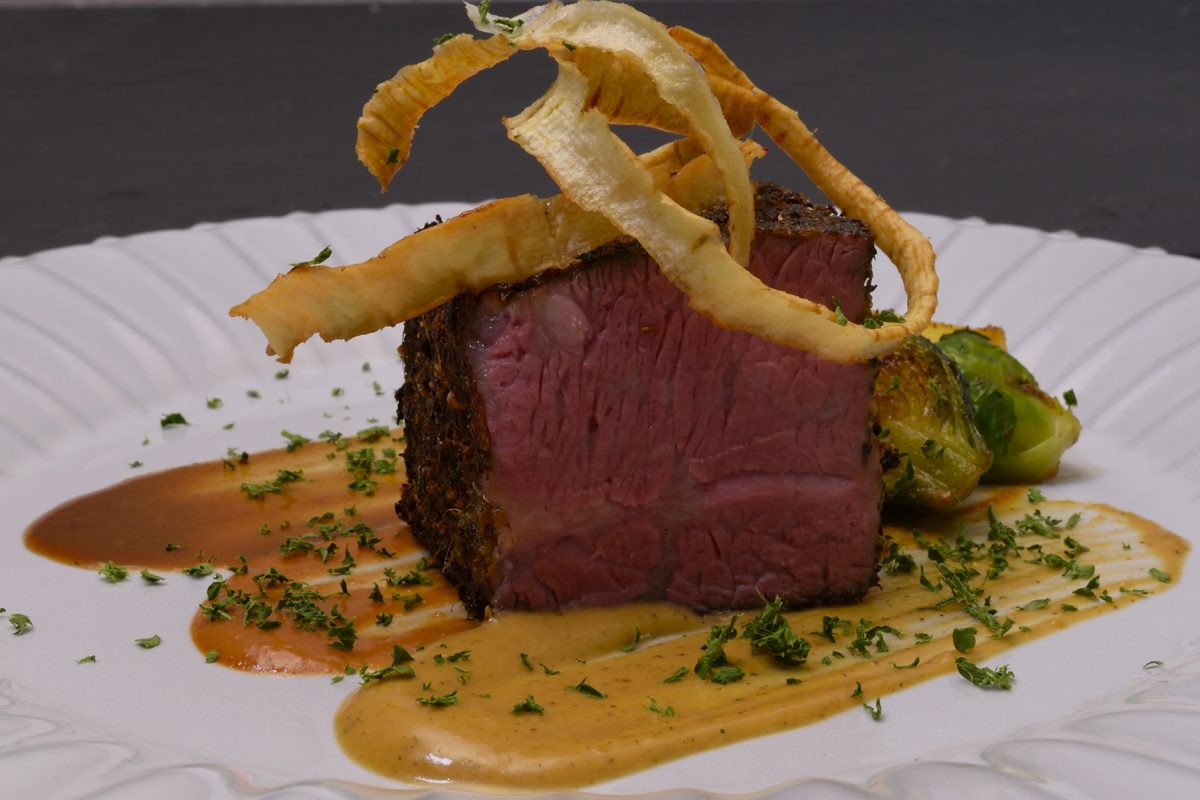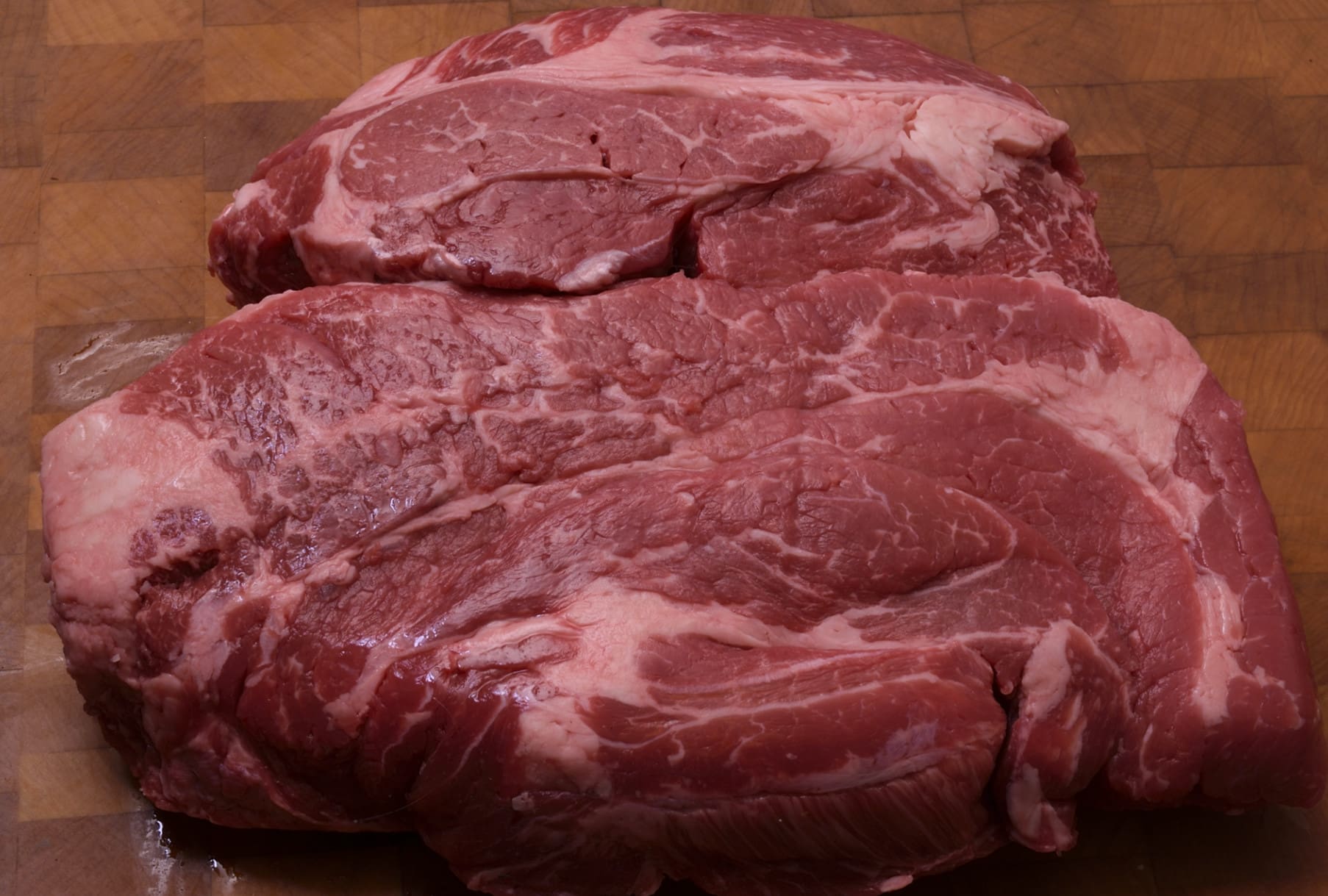Serves 3+
Level of difficulty: 2.25

How do you like your steaks?
The exact definition of “rare,” “medium rare,” “a point,” etc can be very subjective. A little practice will help you learn just exactly what temperature corresponds to your preferred appearance of doneness. Here are some commonly accepted guidelines.
Medium Rare: 130 F/54 C.
Medium: 135 F/57 C.
Medium Well: 140 F/60 C.
Well, 150 F+/66 C+.
Procedure:
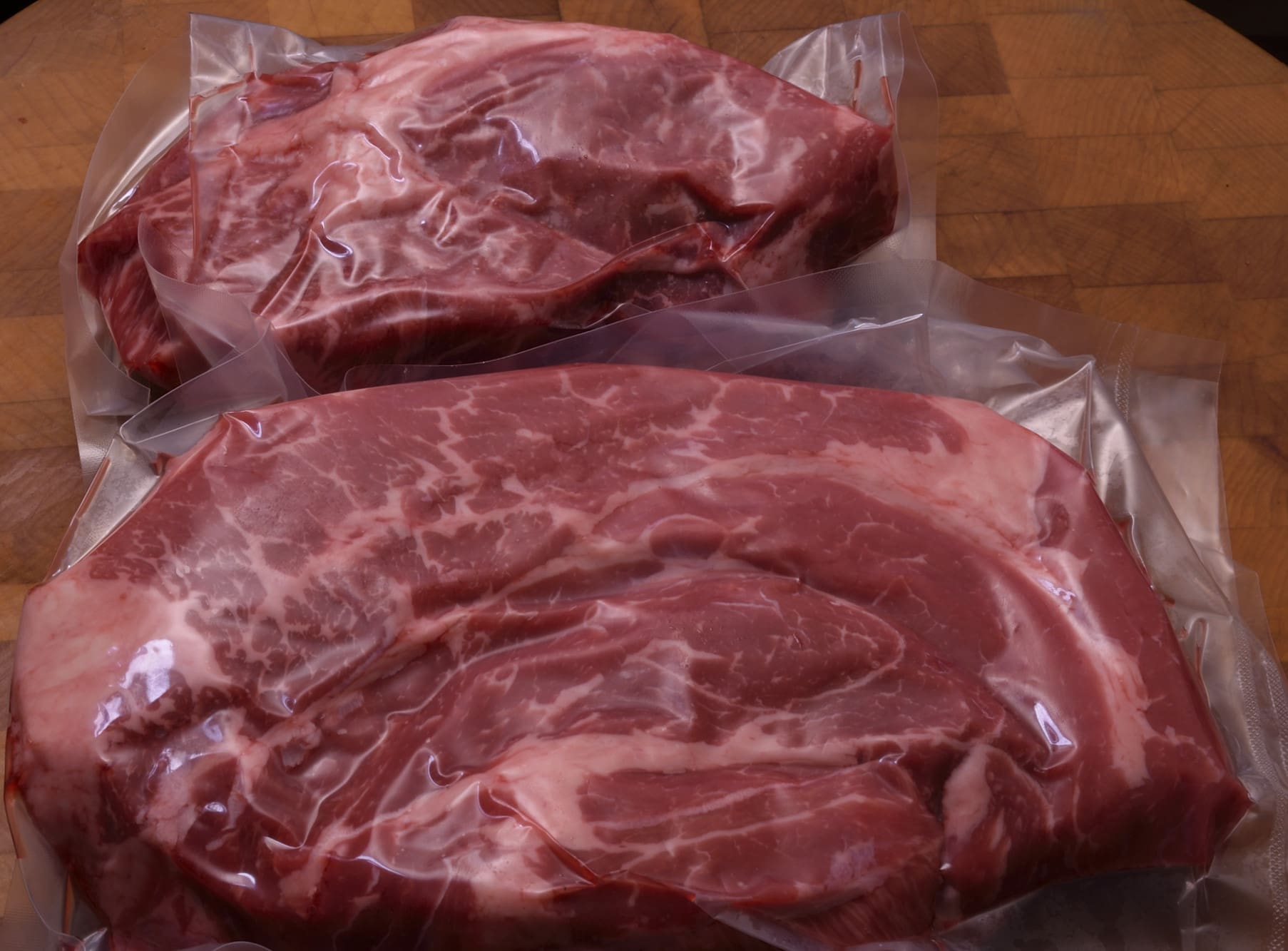
Stage the chuck roast into dedicated vacuum bags. Seal and sous vide process at
130 F/54 C (or your preferred level of doneness according to the chart above) for 36-48 hours until it passes the pinch test, explained HERE.
Choices:
Some people want to time their sous vide project so that the meat is ready to finish immediately after processing. Unfortunately meat tends to defy our wishes and achieve the desired tenderness on its own schedule. This is true of all methods of cooking, not just sous vide. For sous vide enthusiasts, there are at least two plans of action:
Once the meat has achieved the desired level of tenderness, the bath temperature can be safely lowered to 126 F/52 C (but no lower). This will stop the tenderization process. The practitioner now has at least a twelve hour window in which to serve.
The other, and more favored alternative is to shock the entire package in iced water to 70 F/21 C and then refrigerate at 40 F/4 C until day/time of service. Provided the protein has been properly pasteurized, the sealed package can be kept at least two weeks without any noticeable deterioration. One can then proceed with the finishing steps described below. Use a probe thermometer to make sure the searing process (and holding process in the warming oven) brings the internal temperature of the chuck roast to at least 125 F/52 C.
Day of service:
Cut open a corner of the bag and harvest the juices into a microwaveable container.
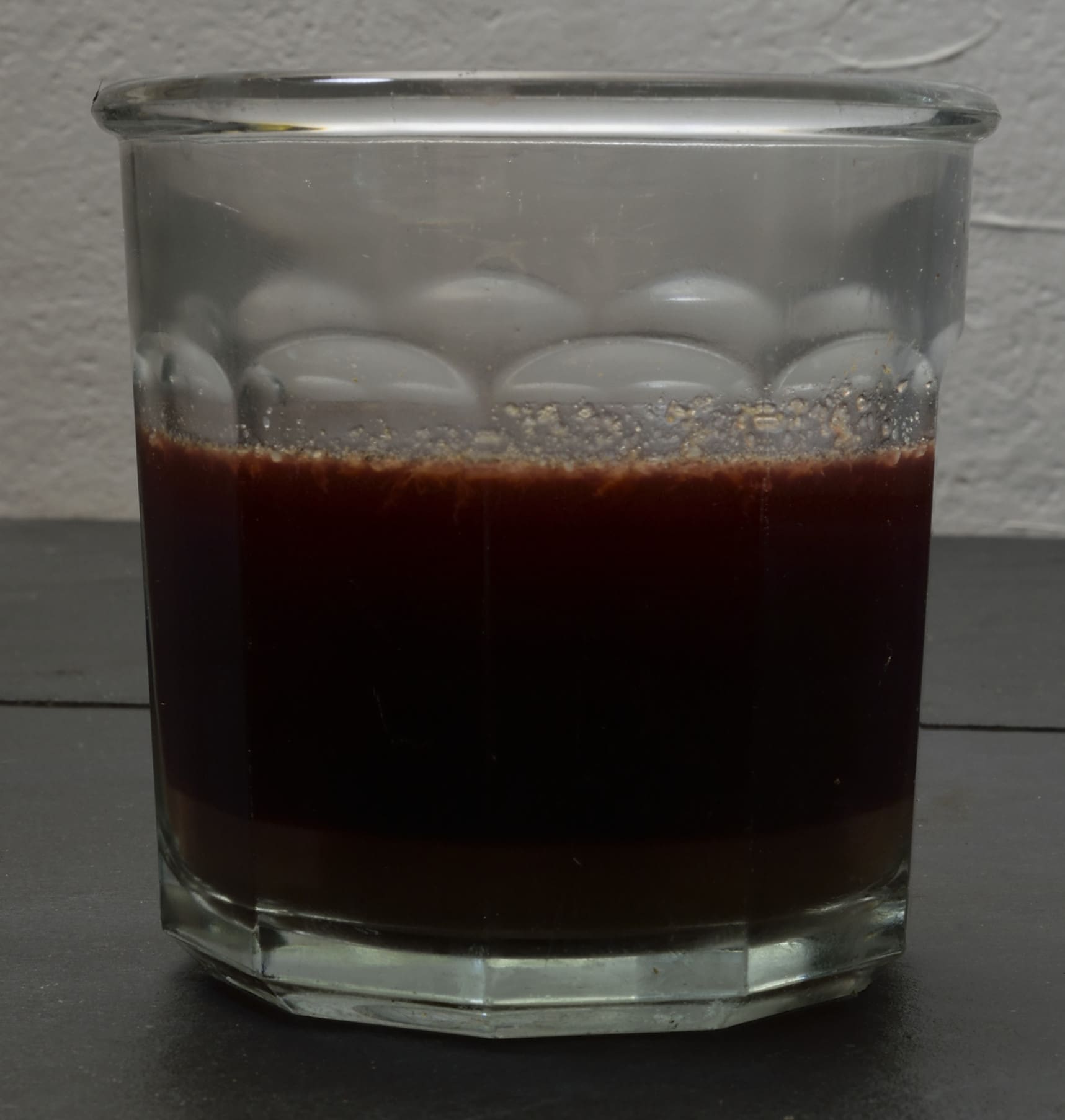
Set the chuck roast aside on a clean surface and microwave process the reserved juices for one minute. They will begin to boil, turn from pink to gray and form a sort of raft on top–this is coagulated albumins and myoglobin. Break apart and process again for 15 seconds. Put the colander above the sauce pot and line with a moistened paper towel–moistening the towel prevents the juices from clinging to it. Pour the boiled juices through the colander.
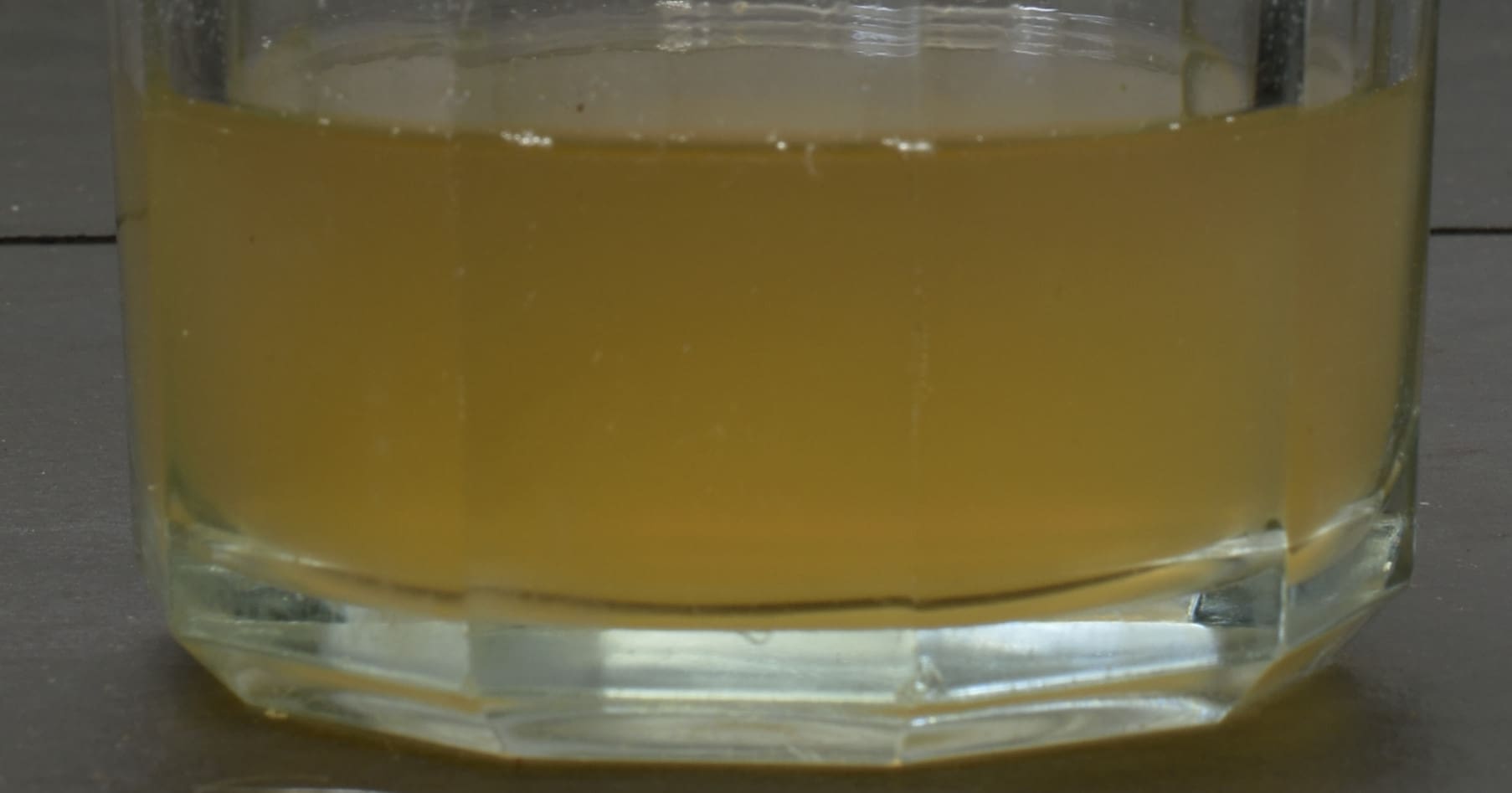
Once clarified, the juices are the equivalent of a salt-free, reduced consommé–clear and packed with flavor. These juices can be substituted in any savory recipe that calls for water or stock. Use to make the Tamarind Sauces or set aside for future applications.
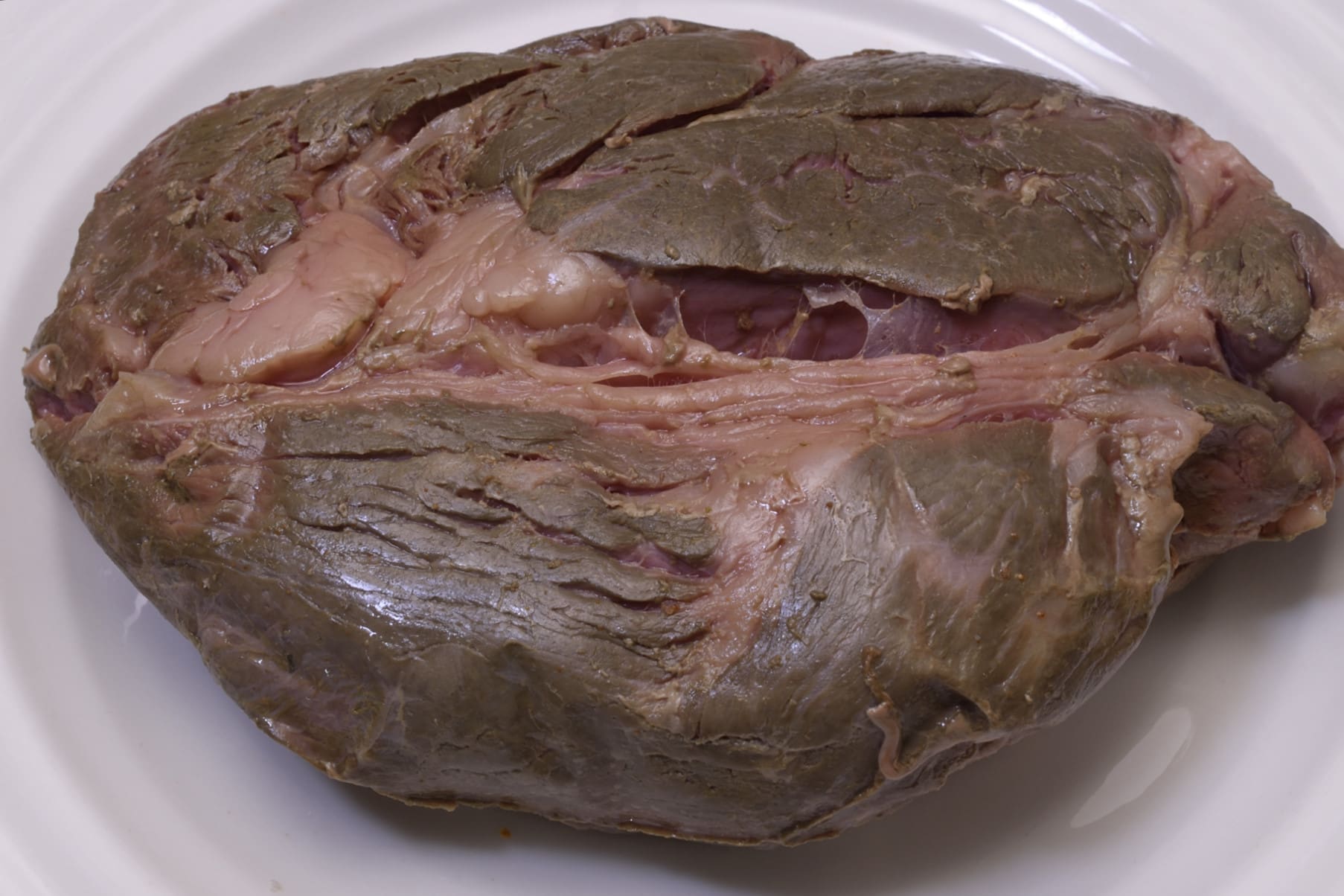
Pat the chuck roast dry with a clean towel or paper towel.
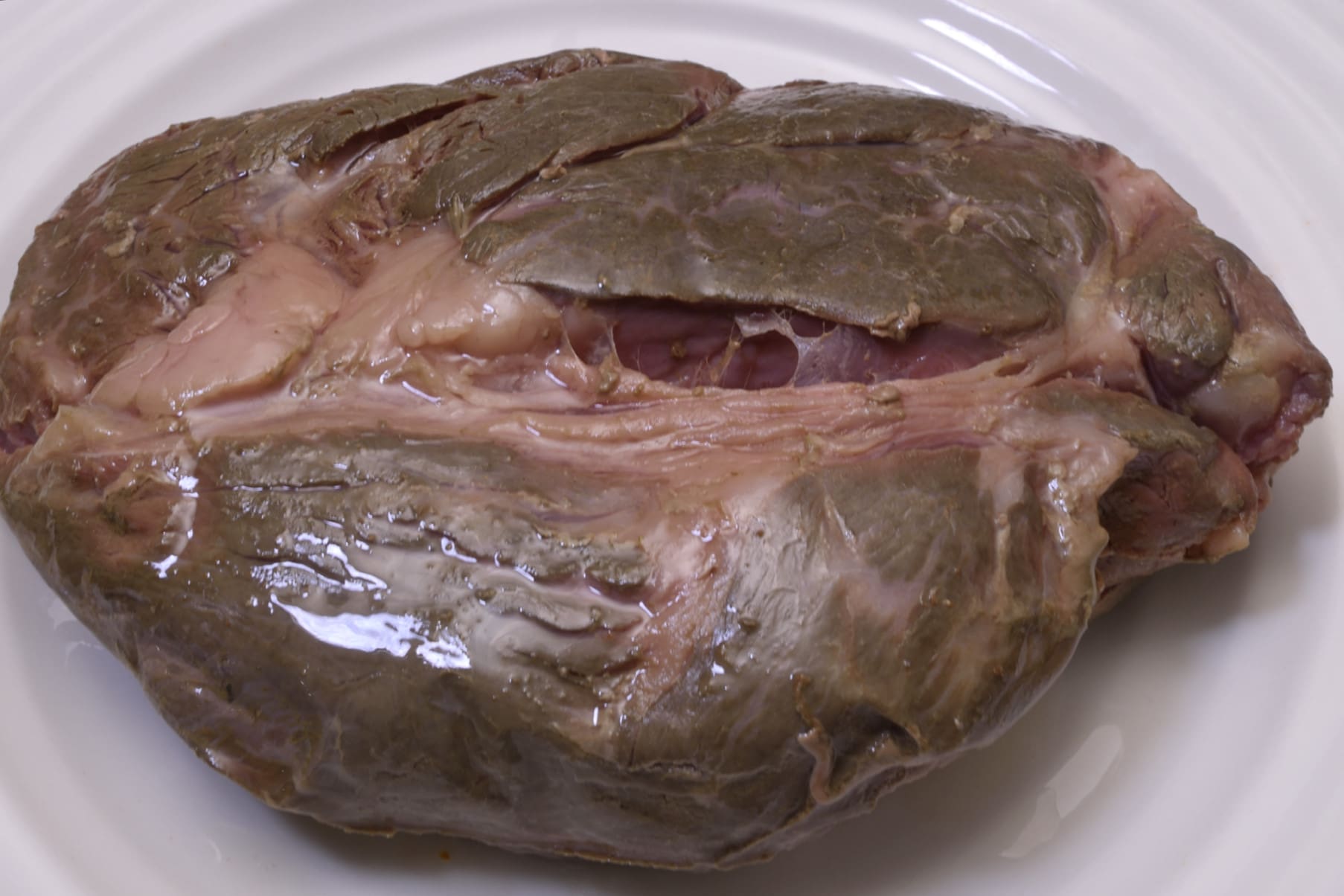
Use a fork to scramble a fresh egg white with 2 Tablespoons of water in a bowl and then moisten the top of the roast. The egg whites replace the albumins released from the ribs during processing. This light coating recreates the surface that is inherent in all meat and helps seasonings to adhere.
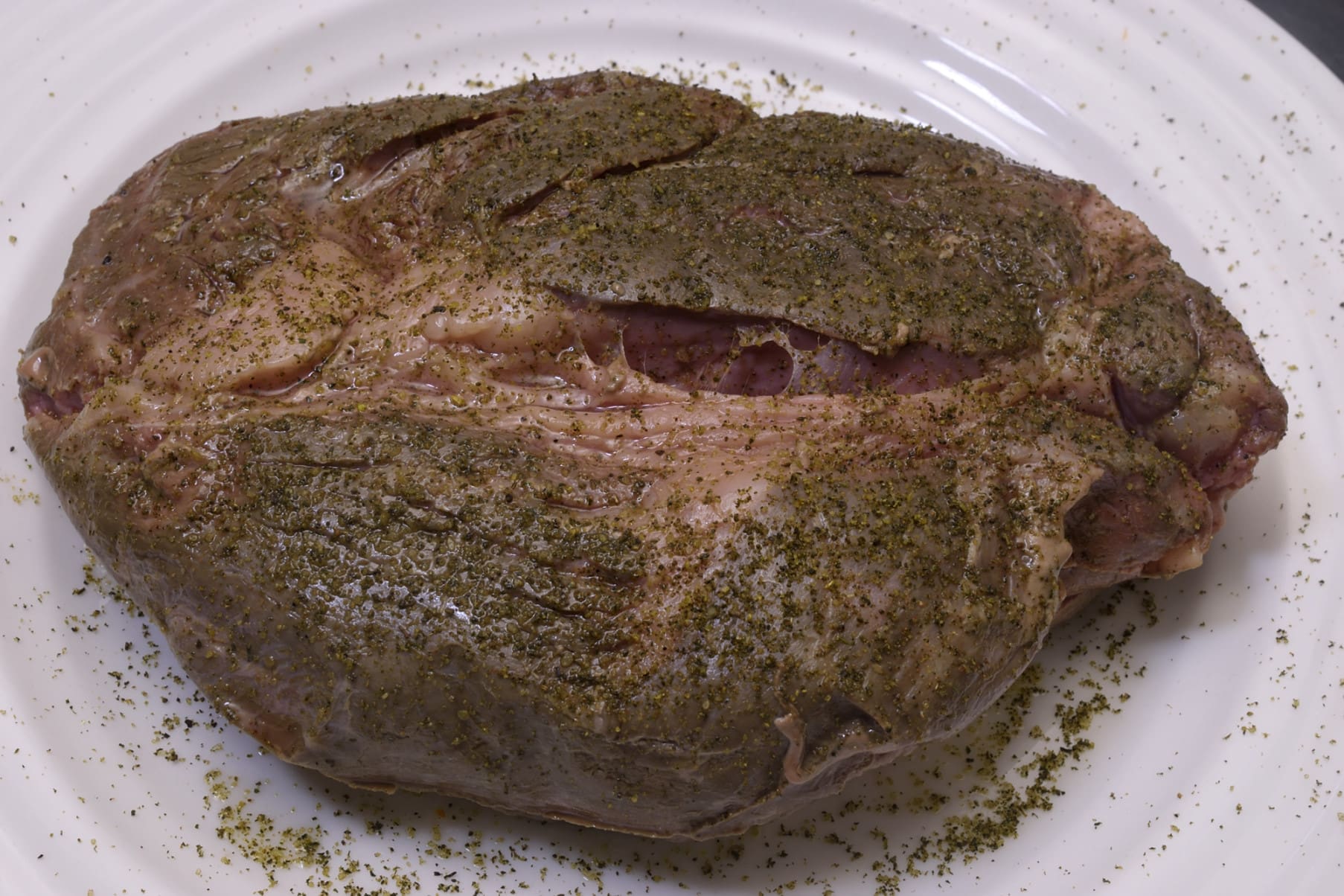
Sprinkle the steaks with the seasonings. Season the edges of the steak too, especially when they are thick! Seasoning is always optional for those with dietary limitations–the seasonings are not part of the chemistry. Drizzle or spray with a small amount of oil. Heat the surface of the pan to approximately 375 F/190 C–you may have to put a drop of oil in the pan in order for the infrared thermometer to register properly. Adding more oil than that to the pan at this time may cause it to burn–this is why I lubricate steaks!
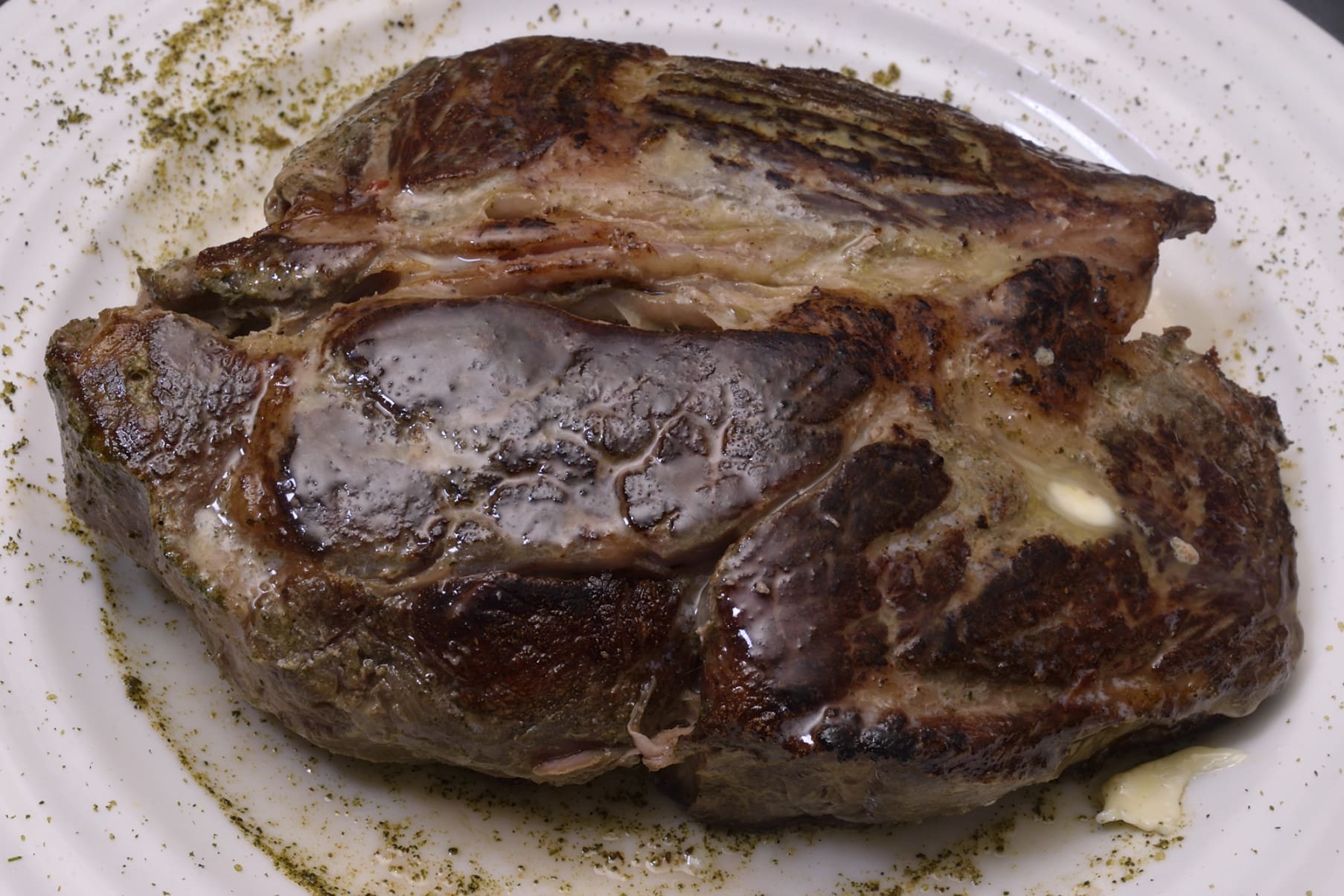
Sear the roast in the hot skillet. Avoid moving or excessively flipping the “steak”–this cools the pan. The searing process should take no more than one minute per side if the steak is “fresh out of the bag.” If the steak has been refrigerated at 40 F/4 C, it may take a little longer in the pan to achieve the desired color and internal temperature of 125 F/52 C. The steak does not require any further cooking. If necessary, toggle the burner down slightly to allow time for the center of the chilled meat to become hot enough without scorching the surface. Remove from heat and coat the steak with a little butter; allow to rest in a warm place or oven set to 140 F/60 C while you catch your breath and get organized!
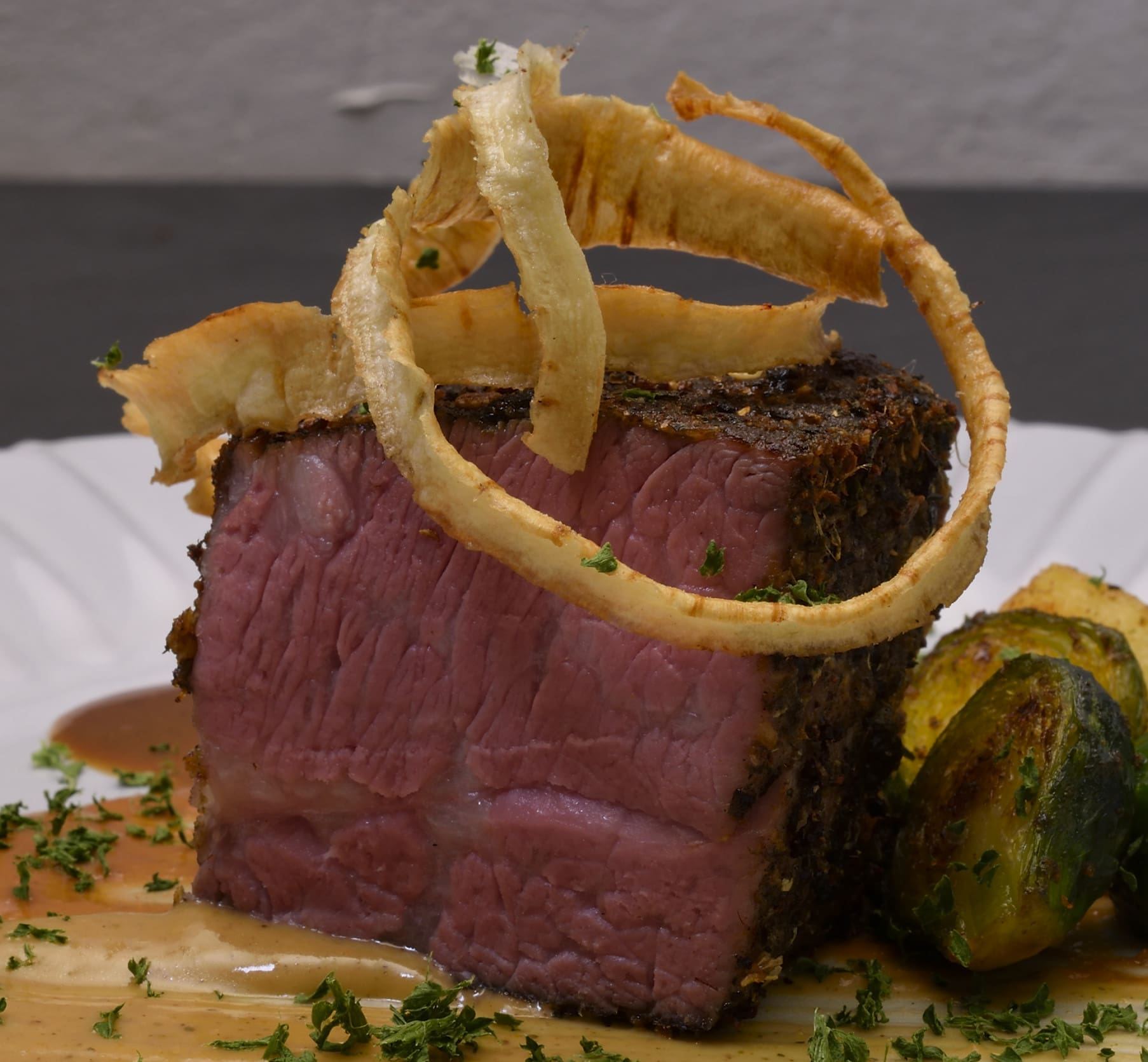
These presentations utilize three different emulsions, all tamarind based–tamarind is the tart pulp from the seed pods of a tree. It is that unique flavor detected in Worcestershire sauce, common steak sauces and cola drinks.
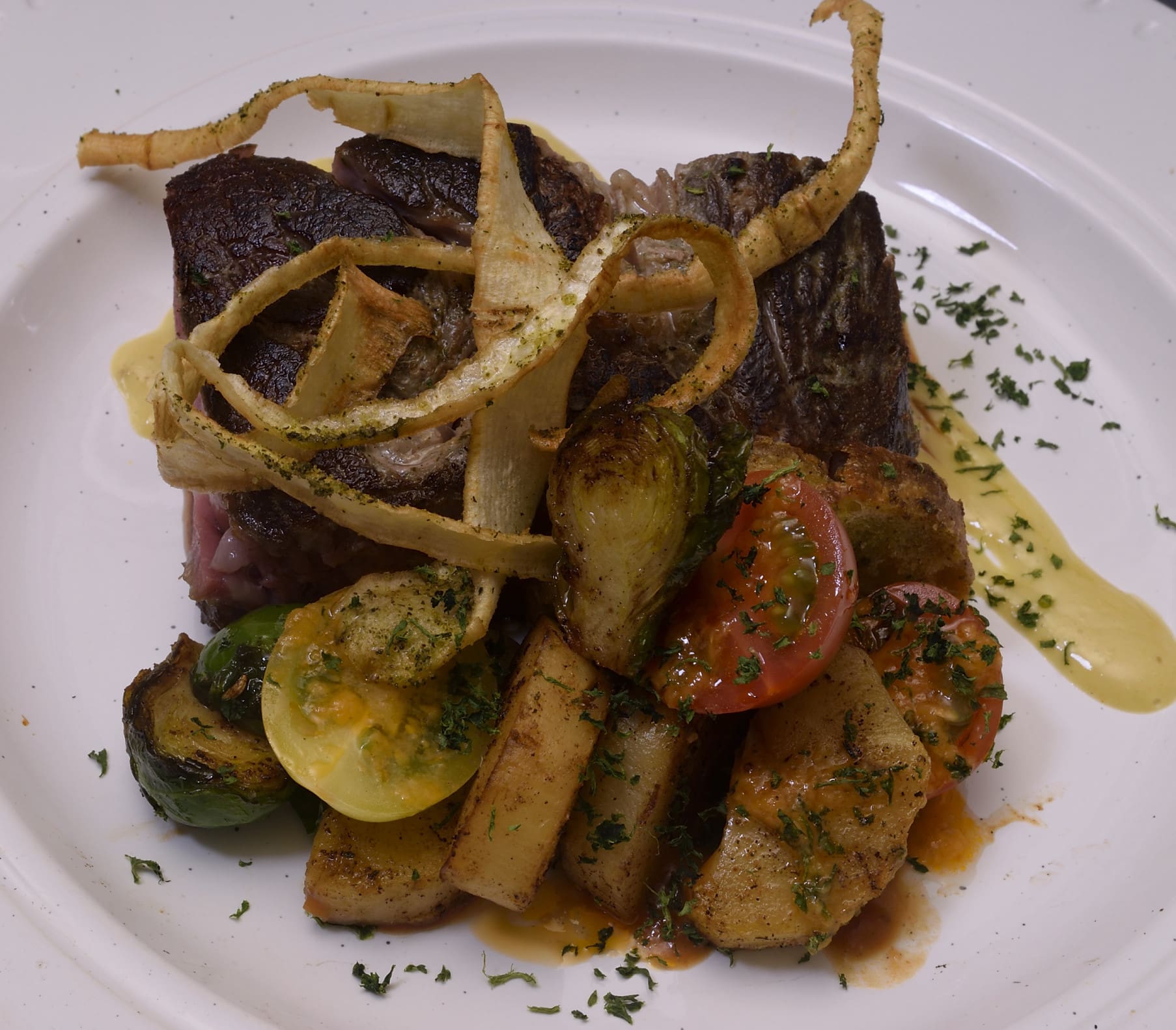
Melt butter in a pan to 225 F/110 C and add the parsnips and Brussels sprouts. Season lightly and toss to coat. Remove from the flame and add the cherry tomatoes.
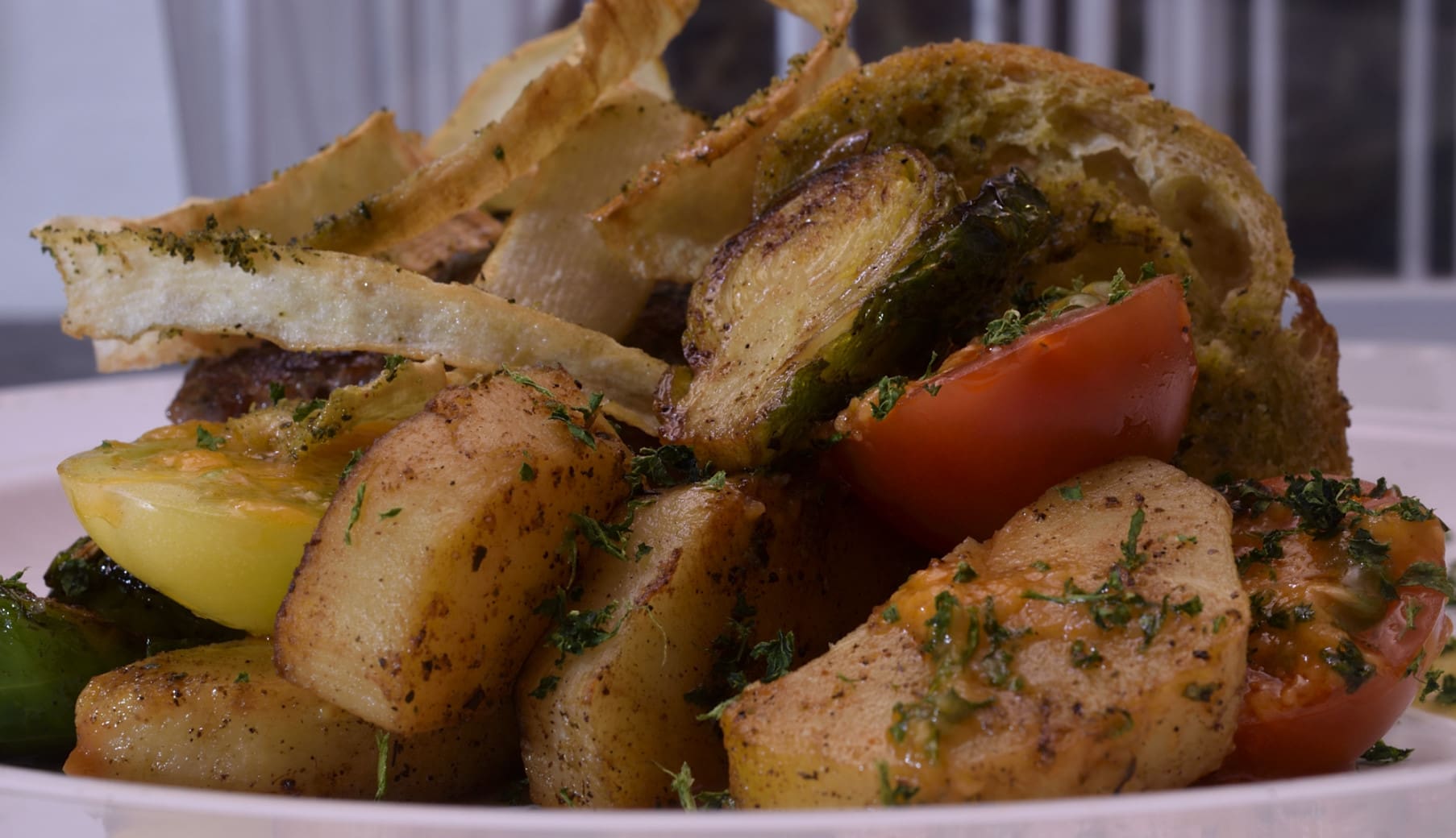
Drizzle the plate(s) with the sauces and arrange the vegetables and crouton. Cut the roast into steak sized pieces pending your preference and place on the plate.
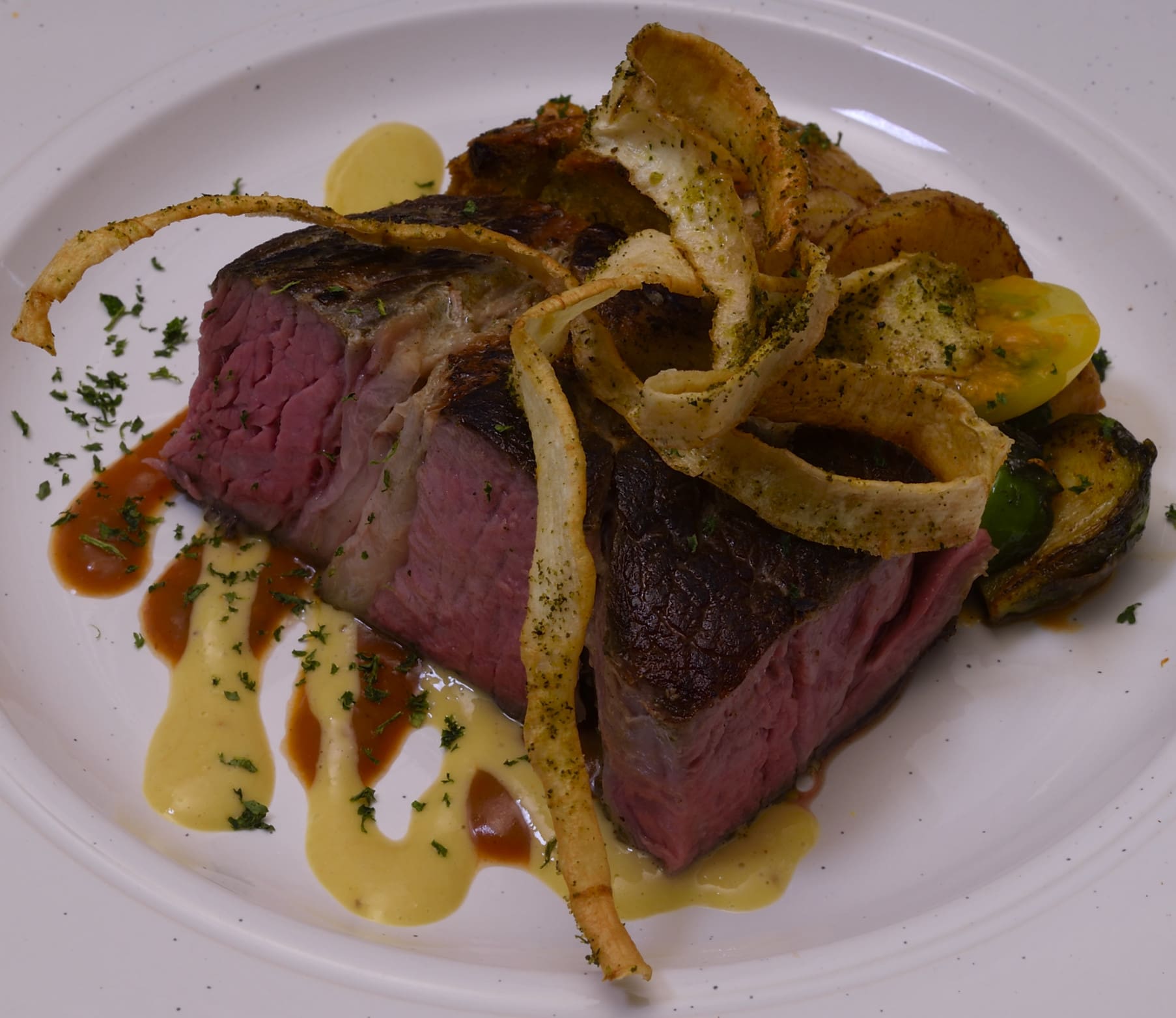
Top with a few of the parsnip shards and sprinkle with chopped parsley.
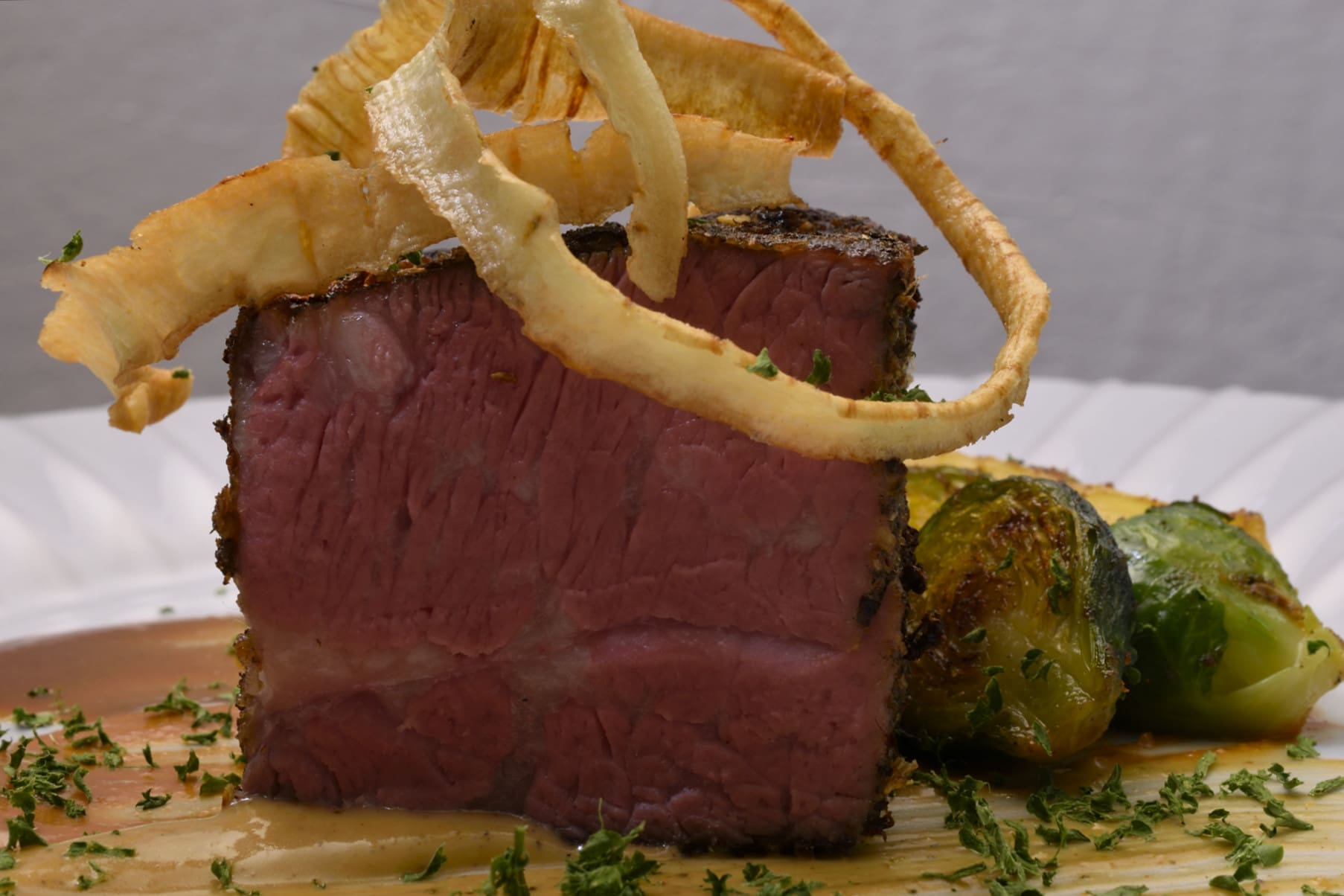
Improvisations
With a little bit of imagination and creativity, this processed chuck roast can be applied to many different uses–this totally changes the meaning of the word “leftovers.” When you buy a carton of milk at the store, bring it home, open it and pour a glass for yourself (or your offspring), it is “milk from the store.” When you have a glass for breakfast tomorrow, is it “leftover milk”? No? This is the way sous vide processed proteins are.
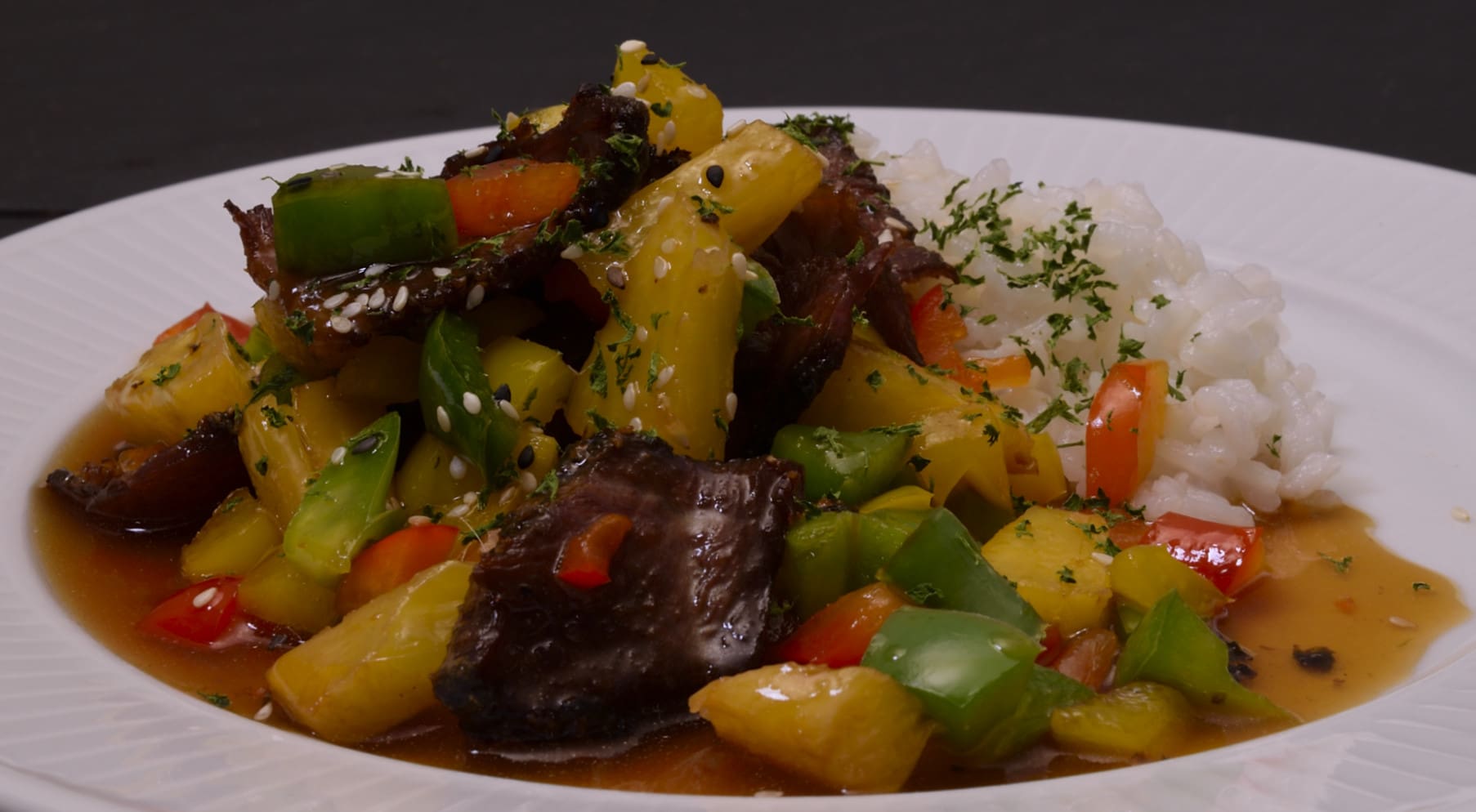
They are just as viable the next day, and the next day, and the NEXT day, as the day that they were processed–as long as the seal has not been broken. Once the seal is broken, again, it is like a carton of milk. Kept cold and sealed up, these products can be expected to last at least a week in the refrigerator. Here’s an Asian application, just replace the meat in your favorite stir fry recipe with sous vide chuck roast–or chicken, or pork, etc.!
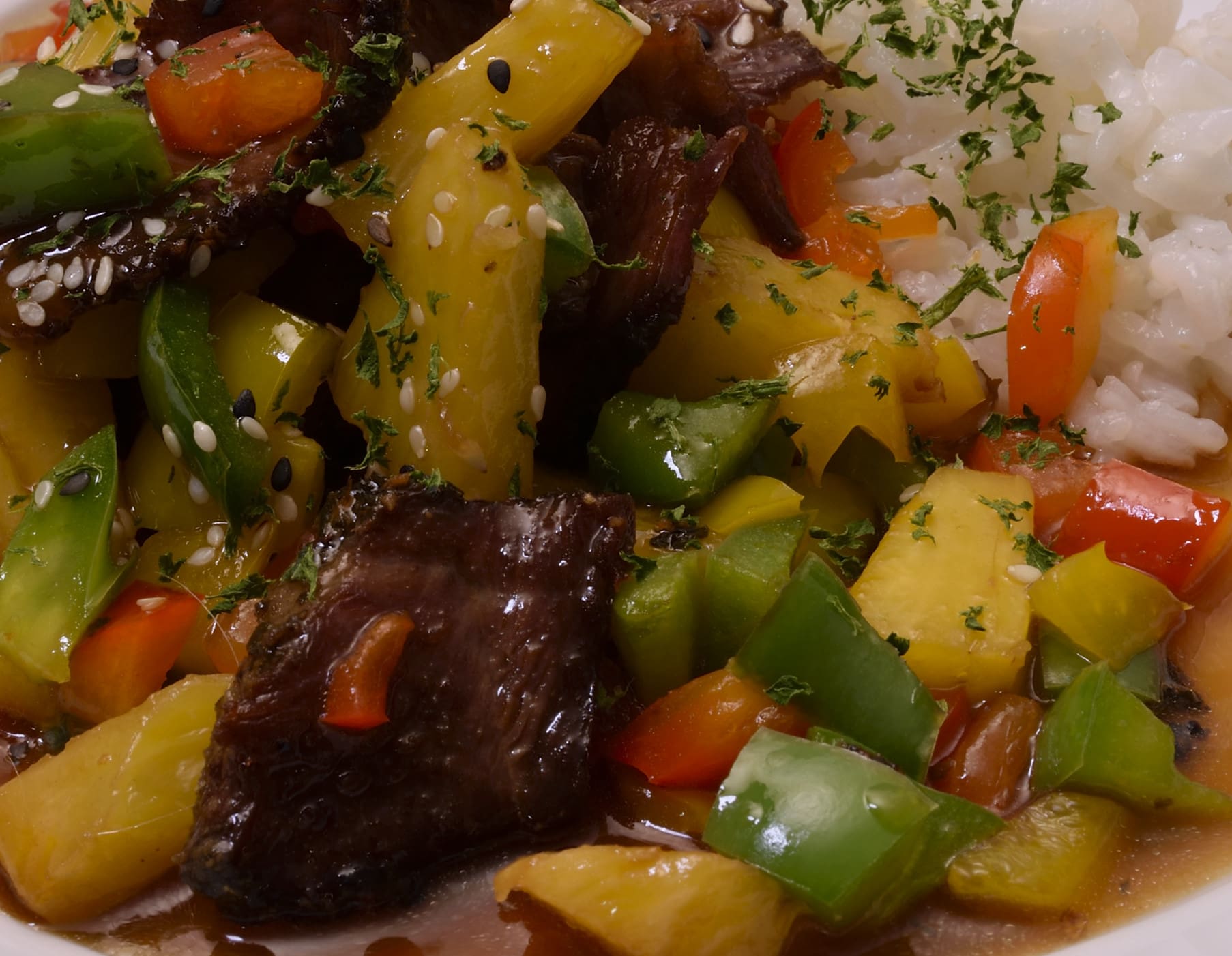
Norm King
Gear: Lipavi C15 container, N15 polycarbonate racks. Lipavi C15L-AO lid.
